Black Swan Blu-ray Movie
HomeBlack Swan Blu-ray Movie 
Blu-ray + Digital Copy20th Century Fox | 2010 | 108 min | Rated R | Mar 29, 2011
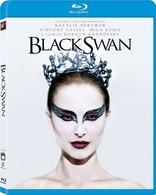
Movie rating
8 | / 10 |
Blu-ray rating
| Users | 4.3 | |
| Reviewer | 4.5 | |
| Overall | 4.3 |
Overview
Black Swan (2010)
A ballet dancer wins the lead in "Swan Lake" and is perfect for the role of the delicate White Swan - Princess Odette - but slowly loses her mind as she becomes more and more like Odile, the Black Swan.
Starring: Natalie Portman, Mila Kunis, Vincent Cassel, Barbara Hershey, Winona RyderDirector: Darren Aronofsky
| Drama | Uncertain |
| Psychological thriller | Uncertain |
| Mystery | Uncertain |
| Surreal | Uncertain |
Specifications
Video
Video codec: MPEG-4 AVC
Video resolution: 1080p
Aspect ratio: 2.40:1
Original aspect ratio: 2.39:1
Audio
English: DTS-HD Master Audio 5.1 (48kHz, 24-bit)
French: Dolby Digital 5.1 (448 kbps)
Spanish: Dolby Digital 5.1 (448 kbps)
Subtitles
English SDH, Spanish
Discs
50GB Blu-ray Disc
Two-disc set (1 BD, 1 DVD)
Digital copy (on disc)
BD-Live
Mobile features
Packaging
Slipcover in original pressing
Playback
Region A, B (locked)
Review
Rating summary
| Movie | 4.5 | |
| Video | 4.5 | |
| Audio | 4.5 | |
| Extras | 3.5 | |
| Overall | 4.5 |
Black Swan Blu-ray Movie Review
Black or white, love it or hate it, Aronofsky’s latest was one of 2010’s best.
Reviewed by Casey Broadwater March 25, 2011It makes sense that Black Swan has provoked such a divisive response in viewers; the film itself seems to be a contradiction, a melodramatic mix of arthouse ideas and pulpy psychosexual thrills. Of course, director Darren Aronofsky isn’t the first to tread the cinematic intersection between the esoteric and the mainstream, the intellectual and the visceral. The influence of several predecessors looms shadow-like over Black Swan, from Alfred Hitchcock and Roman Polanski, to David Cronenberg and David Lynch—all filmmakers who have balanced “genre” elements with higher philosophical pursuits. Comparatively, Aronofsky’s film is shifted more toward the commercial end of that particular scale—it tends to be obvious where a better film would be ambiguous—but Black Swan is still a brazen, daring piece of work, the kind that doesn’t often make its way to the multiplex. A few sore-thumb unsubtleties aside, this is a film that wraps you tightly in its dark beauty and gauzy claustrophobic tone.
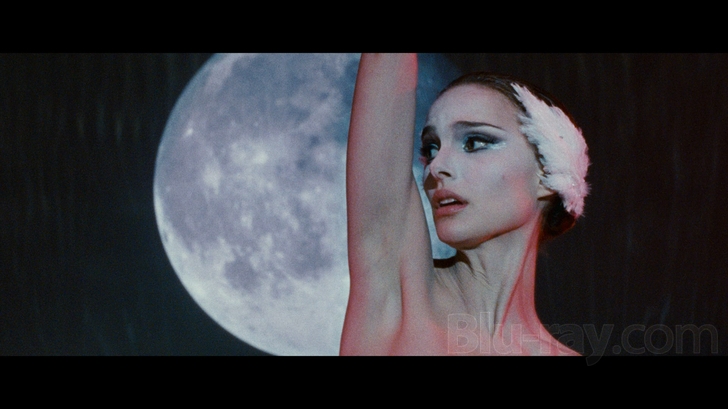
The White Swan
At the film’s heart is Tchaikovsky’s Swan Lake: “We all know the story,” says Thomas Leroy (Vincent Cassel), the swaggering director of the New York City Ballet. “Virginal girl, pure and sweet, trapped in the body of a swan. She desires freedom but only true love can break the spell. Her wish is nearly granted in the form of a prince, but before he can declare his love, her lustful twin, the black swan, tricks and seduces him. Devastated, the white swan leaps off a cliff, killing herself and, in death, finds freedom.” Thomas intends to start his new season with a “visceral” and “real” reinterpretation of the tale, but he needs a star ballerina capable of embodying both the White Swan’s innocence and her dark twin’s wanton abandon.
Nina Sayers (Natalie Portman) desperately wants the role—in the opening scene, we see her dreaming about it—and as Thomas puts it, “If I was only casting the White Swan, she would be yours. But I’m not.” Nina is too wholesome by half, a sexually-stunted dancer who has devoted her life to her craft, practicing perfect technique but never losing herself in the movements. She still lives with her overbearing stage mother (Barbara Hershey)—a resentful former ballerina who lives vicariously through her daughter—and she sleeps in a doll-infested, powder-pink bedroom. It’s the room of a girl, not a woman, and it says everything about her. Nina claims she’s not a virgin, but we have a hard time buying that. Still, Thomas sees some “bite” in Nina and gives her the part, convinced he can coax out her dark side. Known for having stormy intimate relations with his lead dancers, Thomas is a master manipulator, using seduction and withholding to get the results he desires on the stage. His first direction to Nina is grounds for a sexual harassment suit: “I have a little homework assignment for you. Go home and touch yourself. Live a little.”
By casting Nina in the lead role of Odette, the swan princess, Thomas displaces the dance troupe’s former star, Beth (Winona Ryder), an aging prima-donna who refuses to go gently into retirement. He also nurtures a strategic rivalry between Nina and her understudy, Lily (Mila Kunis), a dark-haired nymphet who personifies the Black Swan’s animal-like lust. She likes her meat bloody, she’s a shameless flirt, and she even has a set of black wings tattooed across her shoulders. (Yes, Kunis and Portman do share a sex scene that’s simultaneously hot and terrifying, bringing new meaning to the phrase “it’ll scare you stiff.”) At first, this may seem like just another backstage dance drama with all the conventional elements— competition and ambition, jealousy and backstabbing—but Nina’s real conflict is progressively with her own ever-fracturing psyche.
The film is told exclusively from her perspective—she’s in every scene—and we quickly suspect that she may not be a completely reliable narrator. The hints start small. Nina picks compulsively at her hangnail-ravaged fingers and scratches a nasty rash on her back; one second she’s bleeding from these wounds, but when she looks again, there’s no blood, no torn skin. It escalates. In a turn that recalls Mulholland Drive and The Double Life of Veronique, Nina begins to see flashes of her own dark doppelganger, a mysterious, highly sensual version of herself. Like the similarly sexually infantilized woman played by Catherine Deneuve in Polanski’s Repulsion—the film that most influences Black Swan—Nina grows paranoid and unhinged, troubled by grim, anxiety-induced hallucinations. Her delusion becomes clear: she’s turning into the Black Swan. Mentally. Physically. Entirely. Think Cronenberg’s The Fly in Powell & Pressburger’s The Red Shoes.
It’s here that the film grows a little too literal minded. Some of the CGI used to bring this transformation to life is much too obvious for a story about such complex psychological issues. And this speaks to a larger problem that holds Black Swan back from greatness—for every evocative, emotionally nuanced scene, there’s another with a cheap jump scare or some other trapping of the horror/thriller genre. (A few are genuinely scary —and necessary—but others seem like overkill.) Aronofsky uses the old “reflection that moves on its own in the mirror” trick no less than three times here, to diminishing effect. And this also dulls the film’s symbolic use of mirrors, which work as a feedback loop of narcissism and self-loathing for unhealthily body-conscious ballerinas.
Nonetheless, Black Swan is a haunting fable that has the power to hang over viewers like a shroud. It’s gothic and lacy, decadently surging on urges so repressed they’ve morphed into neuroses. It explores female sexuality and ambition in uncommon ways, and it terrifies with a feathery variation on David Cronenberg’s “body horror.” This is just the story; I haven’t even touched on the lush production design, the impressive dance numbers, or the convincing performances. Natalie Portman deserves her Oscar win for Best Actress; as Nina she’s beautifully frail and panicked, a not-quite-woman who gives into the darkness and pays the cost of artistic perfection. Mila Kunis is sex-charged and smoky, Barbara Hershey makes an unsettlingly perfect bitter-but-loving parent, and Vincent Cassel gets a break from his usual violent villain roles to play a masculine, eel-like impresario. This is Darren Aronofsky’s best film since 2000’s manic Requiem for a Dream, and while he’s yet to make a masterpiece, Black Swan certainly comes closest.
Black Swan Blu-ray Movie, Video Quality 
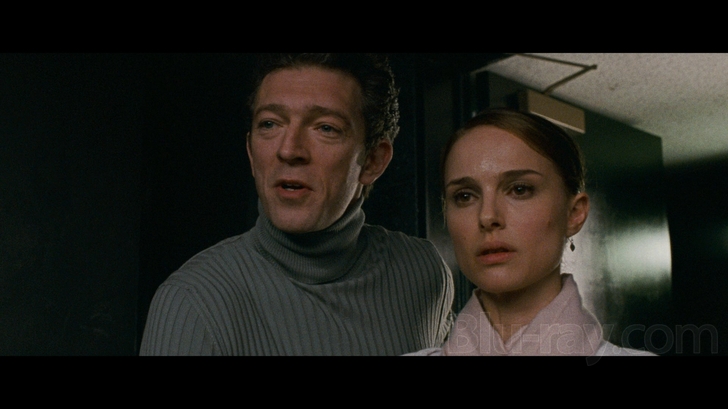
To properly appreciate Black Swan's true-to-source 1080p/AVC-encoded transfer, you need to understand the way the film was shot. Rather than using 35mm or cinema-centric digital rigs like the Red One camera, director Darren Aronofsky and cinematographer Matthew Libatique opted to use an unconventional mix of 16mm Arriflex cameras and two of Canon's 1080p video-capable DSLRs, the 5D Mark II and the 7D. I'm guessing the rationale for this combo had to do with more than just cost. (Although, this was probably one factor. 16mm is cheaper to shoot and develop than 35mm, and a 5D can be bought off the shelf, sans lens, for less than two and a half grand.) I'm sure Aronofsky had aesthetic and kinetic considerations in mind as well. Both the Arriflex and the Canon cameras lend themselves to a realistic, almost documentarian quality, and since the entire film was shot handheld, these smaller camera bodies would be much easier to wield. There are drawbacks. 16mm produces a grainier, softer image than 35mm— which has essentially double the analog resolution—and in low light, the Canon digital cameras are susceptible to a certain amount of noise. That said, I love the look of this film, and Fox's Blu-ray captures it near-perfectly. While detail is not as finely rendered as it could've been on 35mm, this is actually one of the sharper 16mm films I've seen, and you'll notice plenty of textures that stand out on screen, especially in close-ups. Likewise, color is strongly and realistically represented, and the dancing scenes—with their evocative costumes and sets and lighting—look wonderful. Shadow detail can sometimes be lost in an image peppered with grain/noise, but black levels are otherwise sufficiently deep, and contrast is perfect. Finally, I didn't notice any overt noise reduction or edge enhancement, and there are no errant compression quirks or other encode issues. Beautiful!
Black Swan Blu-ray Movie, Audio Quality 
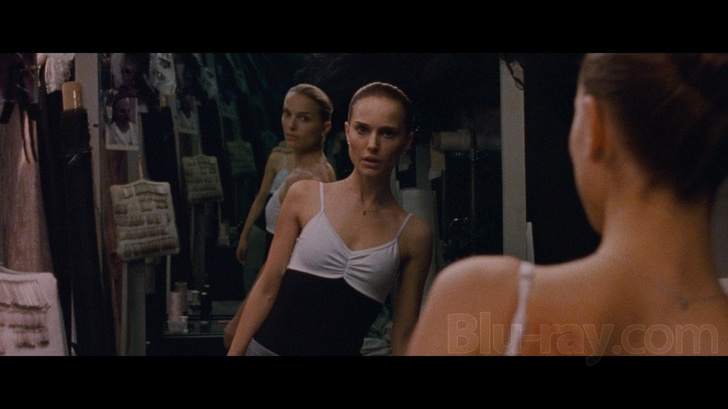
Sound design plays a huge role in the film's psychological terror, and the DTS-HD Master Audio 5.1 surround track included on this disc brilliantly brings to life Nina's subjective nightmares. The rear channels are put to frequent use stirring up unsettling ambience—skittering subway sounds, ruffling feathers, heavy breathing—and directionality is so seamless as to be almost unnoticeable. Let me explain. You know how certain cross-channel effects in action films sound showy, stocky, too in-your-face? There's none of that here. Rather, the surround speakers are used subtly and effectively, sometimes broadcasting pinpoint accurate locational sounds, and elsewhere loosing the creepy noises that only exist inside Nina's head. One of my favorite audio moments is a simple rehearsal scene. There's a piano playing in one corner of the room, and as the camera circles around the dancers, the sounds of the piano circle realistically with it. Of course, music is also important to the tone of the film, and it all sounds wonderful, from the aching strains of Tchaikovsky, to Clint Mansell's evocative score, to the LFE-heavy bass thumps inside a packed nightclub. Everything is clear and forceful and dynamically rich. Dialogue rides comfortably at the top of the mix, and also has a clean, full presence. The disc also includes Spanish and French dubs—in Dolby Digital 5.1—as well as easy-to-read English SDH and Spanish subtitle tracks.
Black Swan Blu-ray Movie, Special Features and Extras 
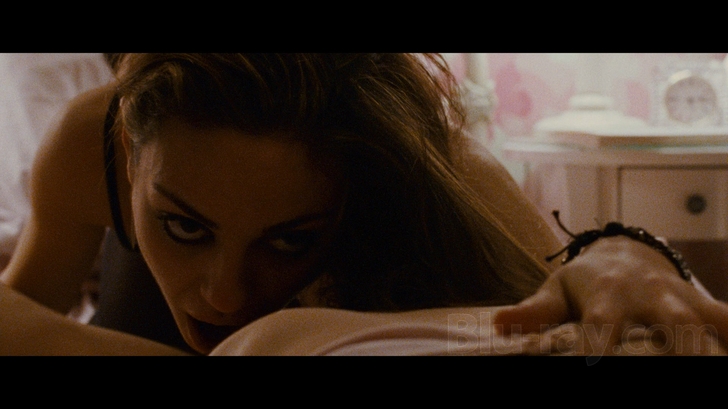
- Black Swan Metamorphosis (1080p, 48:55): The disc's best and lengthiest feature is this nearly fifty-minute making-of documentary, which examines the film from all angles and includes interviews with just about everyone involved, along with lots of great on-set, behind-the-scenes footage. I particularly enjoyed seeing how minimalistically the film was lit and shot.
- Theatrical Trailer (1080p, 2:02)
- Ballet (1080p, 2:33): Not so much a featurette about the use of ballet in the film as a simple synopsis, with quick interviews with the director and star.
- Production Design (1080p, 4:00): Production designer Therese DePrez and the director discuss the influence that design has on the story.
- Profile: Natalie Portman (1080p, 3:16): Portman discusses her character and the eight-year process of preparing for the role.
- Profile: Darron Aronofsky (1080p, 2:48): The director talks about the origin of the story and the way he decided to shoot it.
- Conversation: Preparing for the Role (1080p, 3:53): A brief conversation between Portman and Aronofsky.
- Conversation: Dancing with the Camera (1080p, 1:35): A continuation of the previous conversation, this one focused on the filming of the dance scenes.
- Fox Movie Channel Presents: In Character with Natalie Portman (SD, 5:56): The following "In Character" promos feature the actors briefly discussing their roles.
- Fox Movie Channel Presents: In Character with Winona Ryder (SD, 2:17)
- Fox Movie Channel Presents: In Character with Barbara Hershey (SD, 3:37)
- Fox Movie Channel Presents: In Character with Vincent Cassel (SD, 4:43)
- Fox Movie Channel Presents: Direct Effect, Darren Aronofsky (SD, 6:23): Aronofsky gives an overview of the film and discusses what qualities are necessary for good directors.
- Sneak Peak: High definition trailers for Casino Jack, Conviction, Never Let Me Go, and Street Kings 2.
- Live Extras: At this time, the only features available on BD-Live are the film's theatrical trailer and a quick two-minute clip from the Metamorphosis making-of documentary.
- Mobile Features: The disc supports the Pocket BLU smartphone app, which allows you to use your phone as a remote control and also access some special features on the go. Right now, only the clip from Metamorphosis and the film's trailer are available.
Black Swan Blu-ray Movie, Overall Score and Recommendation 
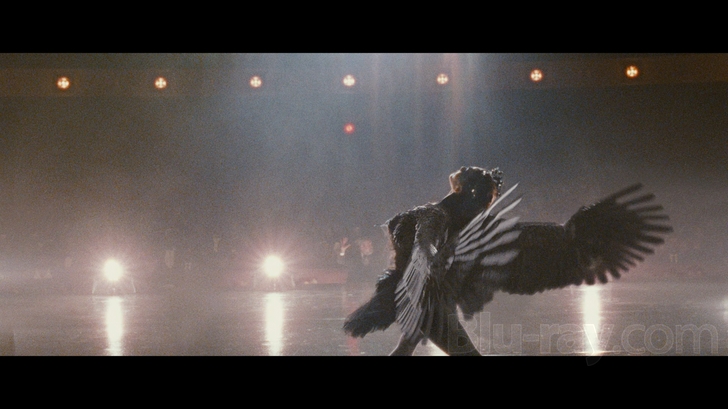
Black Swan's CGI excesses sometimes stick out like a hangnail you'd like to rip off, but otherwise, this is one of the best films of 2010, a dark, lurid psychosexual drama that plumbs the depths of artistic desperation. It's a must-have on Blu-ray, in my opinion, and if you enjoyed Black Swan, I'd also advise you to check out three thematically similar films: Roman Polanski's Repulsion, Powell & Pressburger's The Red Shoes, and Krzysztof Kieslowski's The Double Life of Veronique. All are highly recommended!
Other editions
Black Swan: Other Editions

Black Swan
2010

Black Swan
Awards O-Ring Slipcover
2010

Black Swan
2010

Black Swan
2010

Black Swan
2010

Black Swan
2010
Similar titles
Similar titles you might also like

Eyes Wide Shut 4K
International Version
1999

Equus
1977

Antichrist
2009

The Forbidden Room
2015

Martha Marcy May Marlene
2011

Moon
2009

Anomalisa
2015

A Bigger Splash
2015

Madeline's Madeline
2018

The Guilt of Janet Ames
1947

The Machinist
2004

Tetro
2009

First Reformed
2017

Repulsion
1965

Black Narcissus
1947

Marjorie Morningstar
1958

A Woman Under the Influence
1974

Whiplash
2014

At Eternity's Gate
2018

You Were Never Really Here
2017